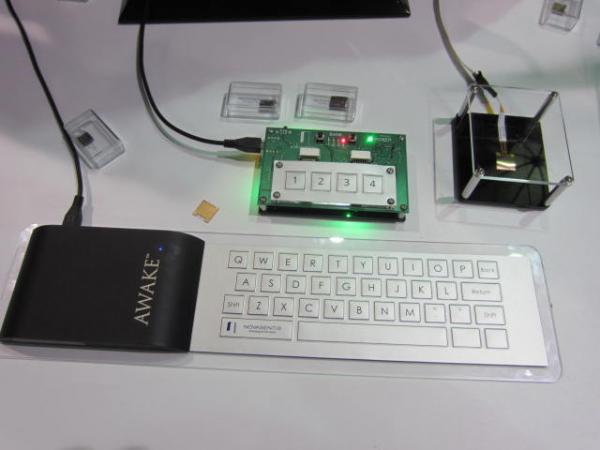Novasentis Wants You To Reach Out and Touch Them
Novasentis has developed technology that enables products to have ultra thin control surfaces. Called haptic actuators, these technologies move beyond the usual mechanical buttons and keyboards, but still provide a sense of tactile feedback. That feedback is important; with today's rapid move toward touchscreens, we have lost that kind of touch.
Rather then limit buttons to tabletop and handheld boxes of various sizes, these actuators can act as a second skin, providing thin, light, and flexible tactile control for mobile and wearable products. Case in point, working with Texas Instruments, Novasentis showed its product concept Awake keyboard - the world's thinnest haptic keyboard. The sensors used Electro-Mechanical Polymer (EMP) technology; keys can deflect and give feedback as with traditional keyboards, but are vanishingly slight compared to mechanical keys or even other haptics keys.
The technology itself is elegant. You touch a surface and the surface sends a signal to a processor; the processor sends a signal to a haptic actuator and it physically moves to give localized (single button) feedback to the user. Impressively, the interface is thinner than a sheet of paper. Where might these new haptic technologies appear? Look for them in wearables, remote controls, and curved displays, among other applications.









































